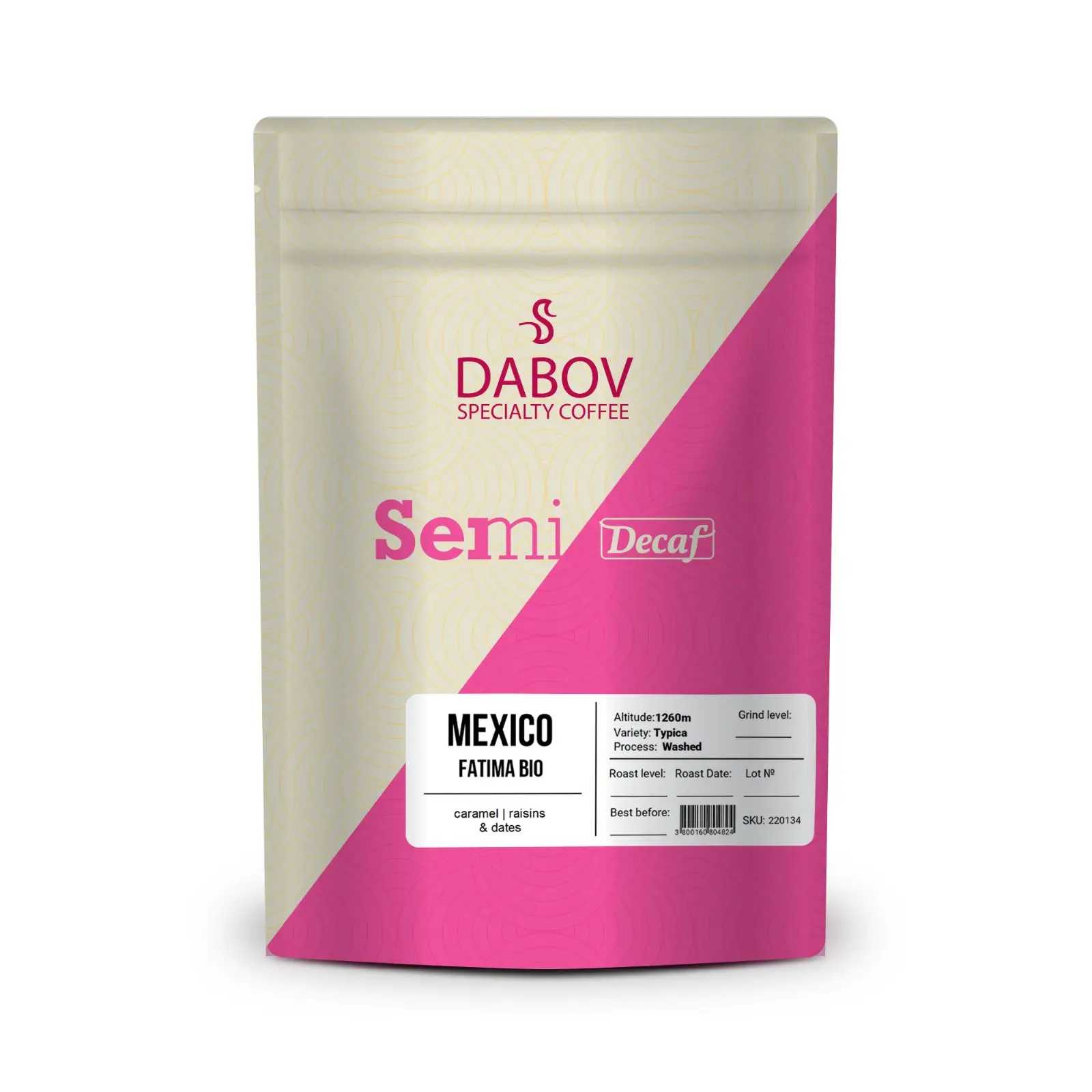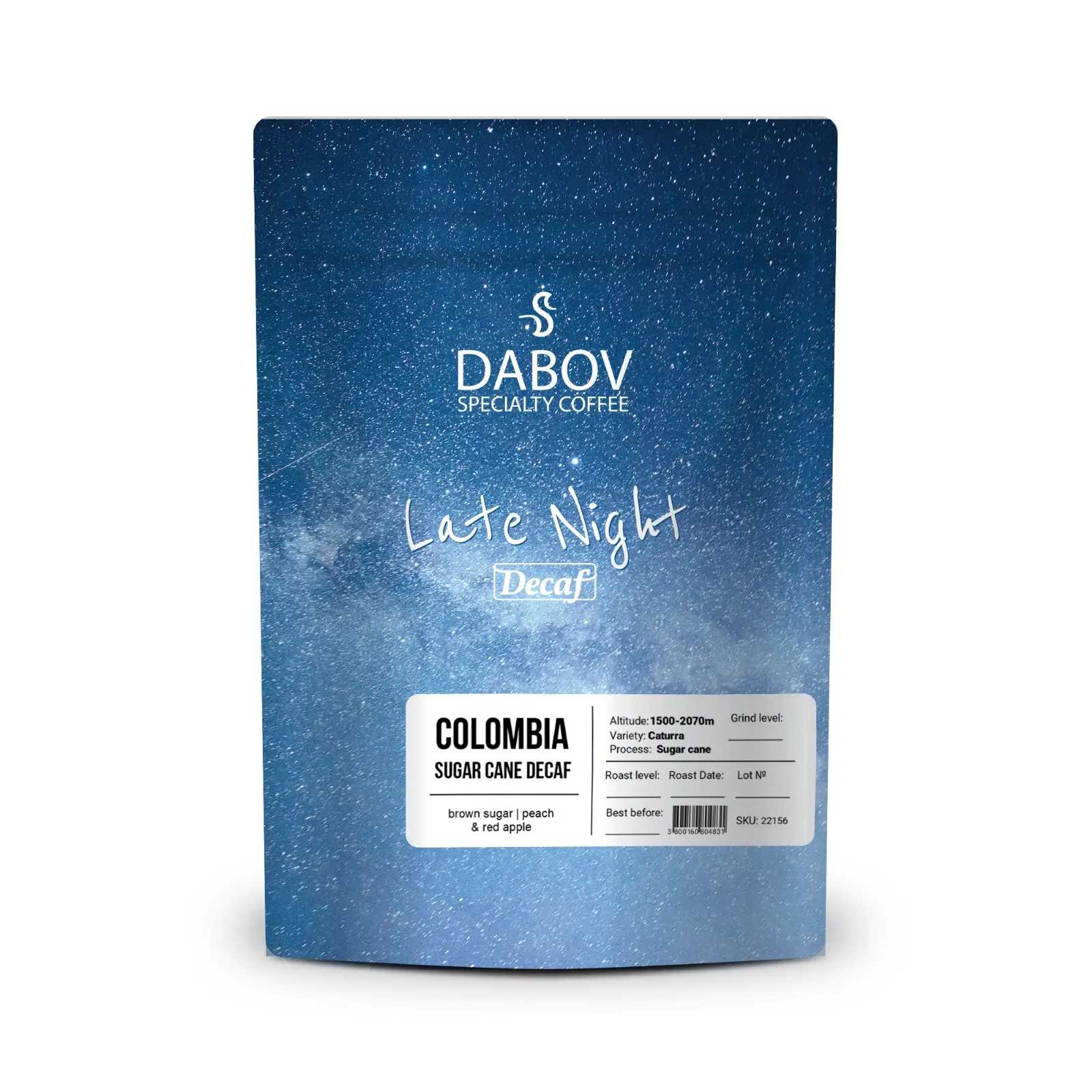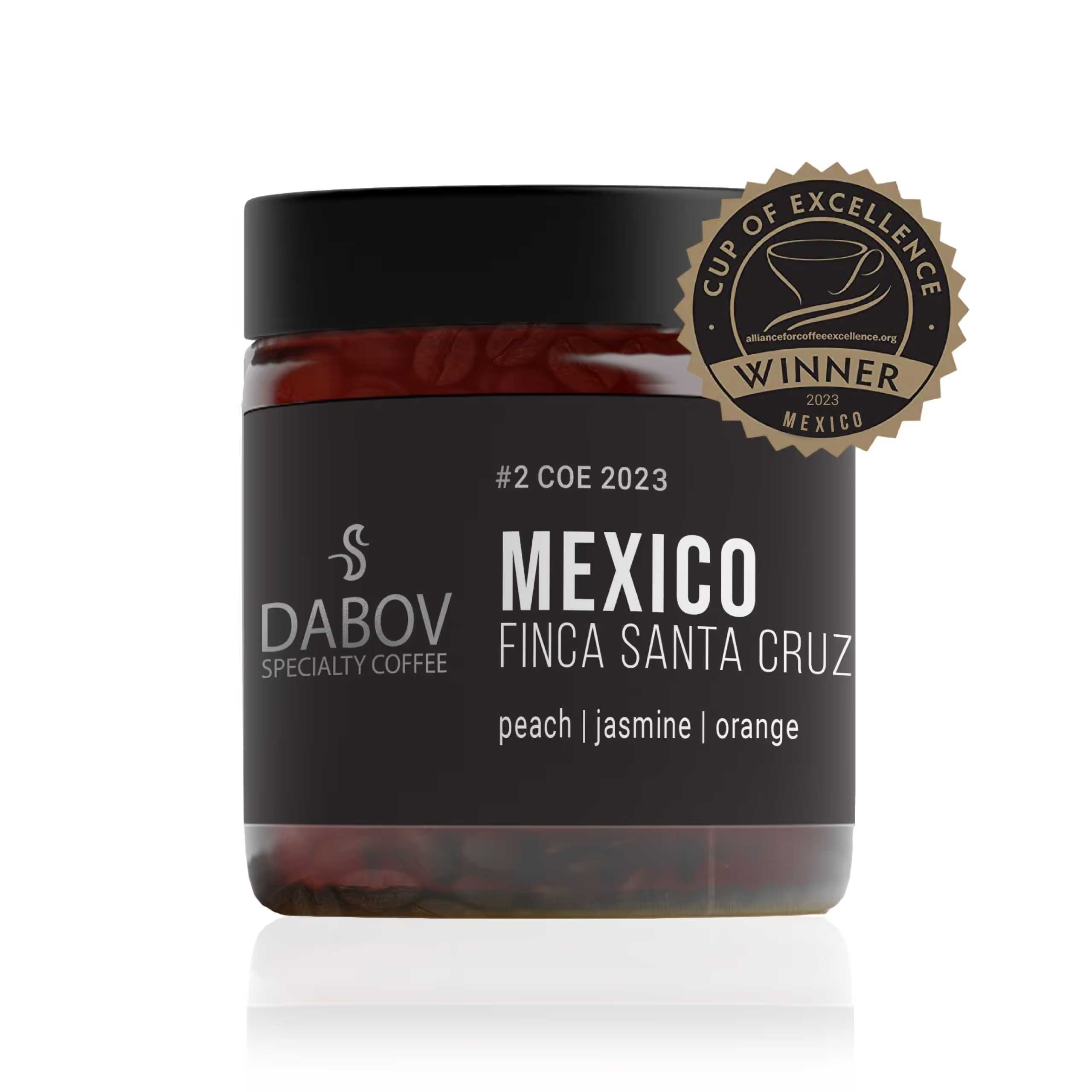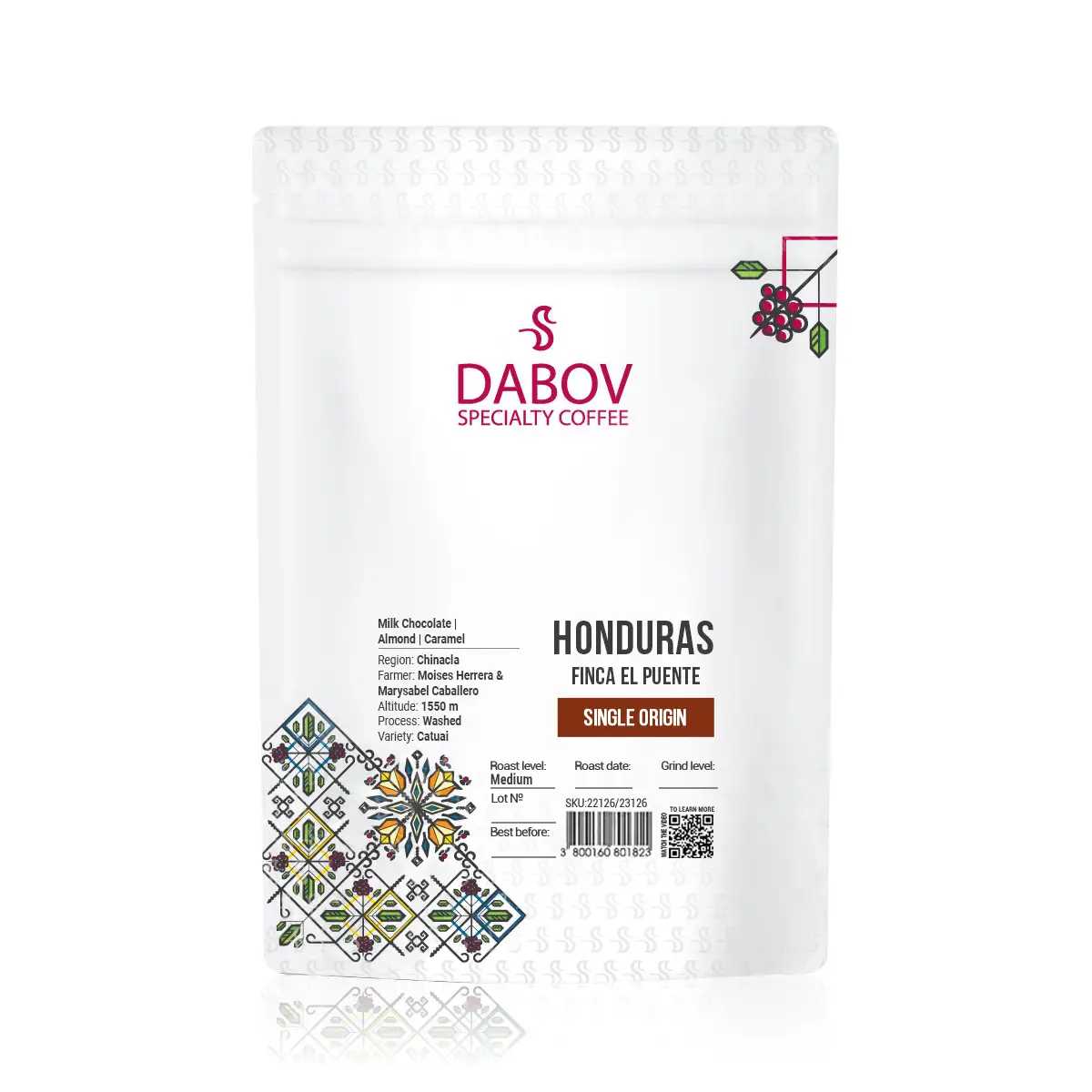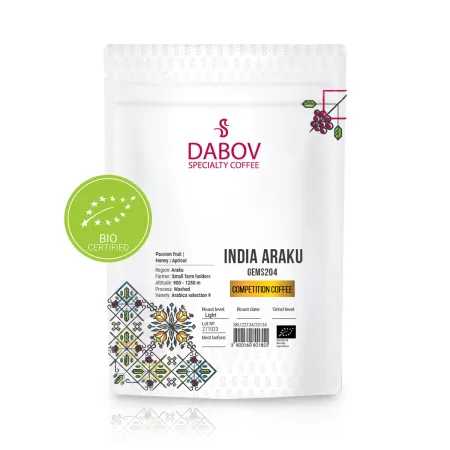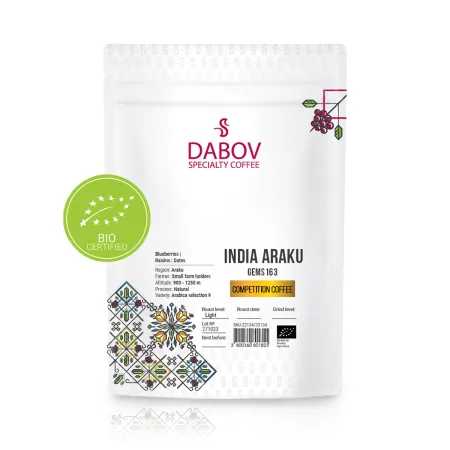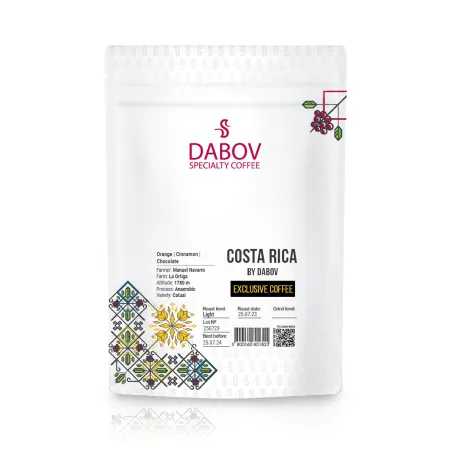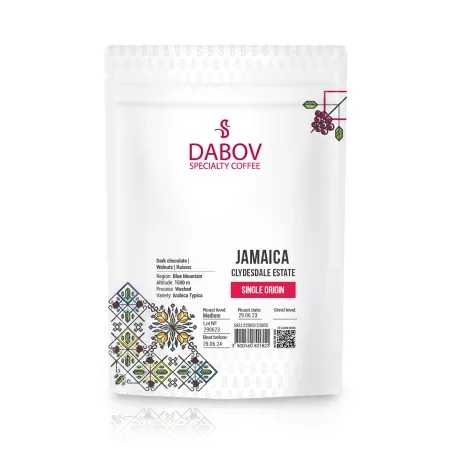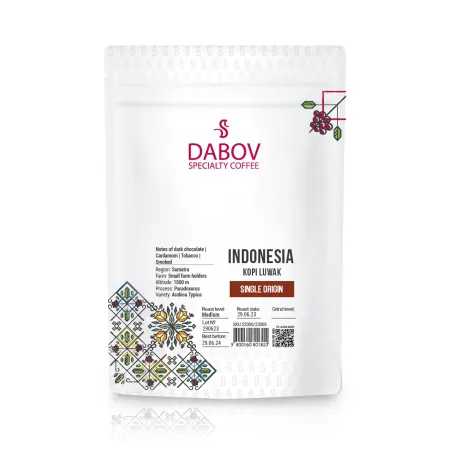The Science Behind French Press Brewing Extraction and Flavor
Discover the magic of French press coffee brewing! This article delves into the science behind coffee extraction and flavor development, revealing how time, temperature, and grind size impact your favorite brew. Whether you're a coffee novice or a brewing aficionado, mastering the French press can elevate your coffee experience. From understanding essential extraction principles to providing a detailed step-by-step brewing guide, you'll be equipped to create the perfect cup. We'll also compare French press to other brewing techniques, highlighting its unique advantages. Join us on this flavorful journey and unlock the secrets of your daily brew!
Coffee enthusiasts and casual drinkers alike have long been captivated by the rich, full-bodied flavors that emerge from a well-brewed French press. This simple yet elegant brewing method has stood the test of time, offering coffee lovers a unique opportunity to explore the nuanced flavors of their favorite beans. In this comprehensive guide, we'll delve deep into the science behind French press brewing, unraveling the mysteries of extraction and flavor development that make this method so beloved among coffee connoisseurs.
Introduction
The French press, also known as a cafetière or press pot, is a coffee brewing device that has been enchanting coffee lovers since its invention in the 1920s. Its popularity stems from its simplicity and ability to produce a robust, flavorful cup of coffee that highlights the unique characteristics of different bean varieties. Unlike other brewing methods that rely on paper filters, the French press uses a metal mesh plunger to separate the grounds from the brewed coffee, allowing more oils and fine particles to remain in the final cup, resulting in a fuller body and more complex flavor profile.
The purpose of this article is to explore the intricate science behind French press brewing, focusing on the extraction process and the development of flavor compounds. We'll examine the various factors that influence the quality of your brew, from grind size and water temperature to steeping time and bean origin. By understanding these principles, you'll be equipped with the knowledge to elevate your French press coffee game and consistently produce exceptional cups that showcase the best your beans have to offer.
Understanding Coffee Extraction
What is Coffee Extraction?
At its core, coffee extraction is the process by which water dissolves and extracts soluble compounds from coffee grounds. This chemical interaction is the foundation of all coffee brewing methods, including the French press. When hot water comes into contact with coffee grounds, it begins to dissolve and extract various compounds, including caffeine, acids, oils, and other flavor-contributing substances. The rate and extent of this extraction process directly influence the taste, aroma, and overall quality of the resulting brew.
Coffee extraction is a delicate balance, and achieving the perfect extraction is the holy grail of brewing. Under-extracted coffee can taste sour, weak, and lacking in complexity, while over-extracted coffee often presents as bitter, astringent, and unpleasantly strong. The goal is to hit the sweet spot where the desirable compounds are extracted in the right proportions, resulting in a harmonious and flavorful cup of coffee.
In the context of French press brewing, extraction is particularly crucial because the coffee grounds remain in direct contact with the water throughout the entire brewing process. This prolonged interaction allows for a more thorough extraction compared to some other methods, but it also requires careful control to avoid over-extraction.
The Role of Time in Extraction
Time plays a pivotal role in the extraction process, acting as a key variable that coffee enthusiasts can manipulate to achieve their desired flavor profile. In French press brewing, the steeping time – the duration for which the coffee grounds are in contact with the water – is a critical factor in determining the final taste of the brew.
As the coffee steeps, different compounds are extracted at varying rates. Generally, the extraction process follows this pattern:
- Fats and acids are extracted first, contributing to the coffee's brightness and initial flavor notes.
- Sugars and other carbohydrates follow, adding sweetness and body to the brew.
- Plant fibers and bitter compounds are extracted last, potentially leading to over-extraction if the steeping time is too long.
The ideal steeping time for French press coffee typically ranges from 3 to 5 minutes, depending on personal preference and the specific characteristics of the coffee beans being used. This window allows for optimal extraction of desirable compounds while minimizing the risk of over-extraction.
It's important to note that extraction doesn't stop immediately when the plunger is pressed down. Some degree of extraction continues as long as the brewed coffee remains in contact with the grounds at the bottom of the press. For this reason, it's advisable to transfer the coffee to a separate carafe or directly into cups after pressing to prevent further extraction and potential bitterness.
Factors Affecting Extraction
While time is a crucial factor in coffee extraction, several other variables play significant roles in determining the quality and characteristics of your French press brew. Understanding and controlling these factors can help you achieve consistent, high-quality results:
- Water Temperature: The temperature of the water used for brewing has a substantial impact on extraction. Generally, water between 195°F and 205°F (90°C to 96°C) is considered optimal for French press brewing. Water that's too hot can lead to over-extraction and bitterness, while water that's too cool may result in under-extraction and weak flavor.
- Grind Size: The size of the coffee grounds is critical in French press brewing. A coarse grind is typically recommended for this method. Coarser grounds allow for slower extraction and make it easier to separate the grounds from the liquid when pressing the plunger. If the grind is too fine, it can lead to over-extraction and result in a bitter, muddy brew. Conversely, if the grind is too coarse, under-extraction may occur, producing a weak and watery coffee.
- Coffee-to-Water Ratio: The ratio of coffee grounds to water, often referred to as the brew ratio, is another crucial factor. A common starting point for French press brewing is a 1:15 ratio (1 part coffee to 15 parts water). However, this can be adjusted based on personal preference and the specific characteristics of the coffee being used. A higher ratio of coffee to water will result in a stronger brew, while a lower ratio will produce a milder cup.
- Water Quality: The quality of the water used for brewing can significantly impact the final taste of your coffee. Ideally, use filtered water that's free from impurities and has a neutral pH. Water with high mineral content (hard water) can interfere with extraction and affect the flavor, while overly soft water may result in a flat-tasting brew.
- Coffee Freshness: The freshness of your coffee beans plays a crucial role in extraction and flavor development. Freshly roasted beans (ideally used within 2-4 weeks of roasting) contain more volatile compounds and oils, which contribute to a more complex and flavorful brew. As coffee ages, it loses these volatile compounds, potentially resulting in a less vibrant and flavorful cup.
- Agitation: The amount of agitation or stirring during the brewing process can affect extraction. A gentle stir after adding water to the grounds can help ensure even extraction by preventing clumping and promoting better contact between the water and coffee particles.
By carefully controlling these factors, you can fine-tune your French press brewing process to consistently achieve the perfect cup of coffee that suits your taste preferences.
The Science Behind French Press Brewing
The French Press Mechanism
The French press, despite its elegant simplicity, is a marvel of coffee brewing engineering. Understanding its components and how they work together is key to mastering the art of French press coffee. The device typically consists of four main parts:
- The Beaker: Usually made of heat-resistant glass or stainless steel, the beaker holds the coffee grounds and water during brewing. Its cylindrical shape allows for easy plunging and cleaning.
- The Lid: The lid fits snugly on top of the beaker and has a hole in the center for the plunger rod to pass through. It helps retain heat during brewing and provides a guide for the plunger.
- The Plunger: This consists of a rod that extends through the lid and attaches to the filter assembly. The plunger is used to separate the brewed coffee from the grounds after steeping.
- The Filter Assembly: Typically made of a fine mesh screen, sometimes with additional perforated metal plates, the filter assembly is attached to the bottom of the plunger rod. It allows the brewed coffee to pass through while trapping the majority of the coffee grounds.
The brewing process in a French press is straightforward but requires attention to detail:
- Coffee grounds are placed in the empty beaker.
- Hot water is added to the grounds, initiating the extraction process.
- The mixture is allowed to steep for a predetermined time, usually 3-5 minutes.
- After steeping, the plunger is slowly pressed down, separating the brewed coffee from the grounds.
- The coffee is then poured from the beaker, leaving the grounds trapped beneath the filter.
This process allows for full immersion brewing, where the coffee grounds are in constant contact with the water throughout the extraction period. This results in a fuller-bodied coffee compared to methods that use paper filters, as more oils and fine particles are allowed to pass into the final brew.
The Chemistry of Flavor Development
The development of flavor in French press coffee is a complex chemical process involving hundreds of compounds. When hot water comes into contact with coffee grounds, it initiates a series of chemical reactions that extract soluble compounds from the coffee particles. These compounds include:
- Caffeine: A bitter alkaloid that contributes to the coffee's stimulating effects and adds a slight bitterness to the flavor profile.
- Chlorogenic Acids: These compounds contribute to the coffee's acidity and astringency. They break down into quinic and caffeic acids during roasting and brewing, influencing the overall flavor balance.
- Trigonelline: A bitter alkaloid that breaks down during roasting to form niacin (vitamin B3) and pyridines, which contribute to the coffee's aroma.
- Carbohydrates: Various sugars and polysaccharides that contribute to the body and sweetness of the coffee. Some of these break down during roasting to form caramel-like flavors.
- Lipids: Coffee oils that contain aromatic compounds and contribute to the coffee's body and mouthfeel. French press brewing allows more of these oils to remain in the final cup compared to methods using paper filters.
- Melanoidins: Brown polymers formed during the Maillard reaction (a chemical reaction between amino acids and reducing sugars) during roasting. These compounds contribute to the coffee's color and some of its flavor complexity.
The extraction of these compounds occurs in stages, with different substances dissolving at different rates. Generally, acids and fats are extracted first, followed by sugars and other carbohydrates, and finally, plant fibers and bitter compounds. This is why controlling the brewing time is crucial in French press coffee – too short, and you miss out on the full flavor spectrum; too long, and you risk over-extraction and bitterness.
The lack of paper filtration in French press brewing also allows for the presence of fine coffee particles and colloids in the final brew. These contribute to the characteristic full body and rich mouthfeel of French press coffee, as well as the continued development of flavor even after the coffee has been poured.
Extractable Compounds in Coffee
Coffee is a complex beverage containing over 1,000 chemical compounds, many of which contribute to its flavor, aroma, and mouthfeel. In French press brewing, the following key compounds play significant roles in shaping the final cup:
- Caffeine: Beyond its stimulating effects, caffeine contributes a bitter note to the coffee's flavor profile. It's one of the more stable compounds in coffee and is extracted relatively quickly during brewing.
- Chlorogenic Acids: These are a family of esters formed from cinnamic acids and quinic acid. They're major contributors to coffee's acidity and astringency. During roasting and brewing, they break down into other compounds, including caffeic acid and quinic acid, which further influence the flavor.
- Trigonelline: This alkaloid breaks down during roasting to form several aromatic compounds, including pyridines and nicotinic acid (niacin). It contributes to the development of roasty and nutty flavors.
- Lipids: Coffee contains various oils and fatty acids that contribute significantly to its body and mouthfeel. These lipids also act as carriers for many aromatic compounds. In French press brewing, more of these lipids make it into the final cup compared to methods using paper filters, resulting in a fuller-bodied coffee.
- Carbohydrates: Coffee contains various sugars and polysaccharides. While many of these break down during roasting, those that remain contribute to the coffee's sweetness and body. Some carbohydrates also participate in the Maillard reaction during roasting, forming flavor compounds that contribute to the coffee's complexity.
- Melanoidins: These are brown-colored polymers formed during the roasting process through Maillard reactions. They contribute to the coffee's color and some of its flavor notes, particularly those described as roasty or caramel-like.
- Volatile Aromatic Compounds: Coffee contains hundreds of volatile compounds that contribute to its aroma and flavor. These include aldehydes, ketones, furans, pyrazines, and many others. The specific mix of these compounds is influenced by factors such as the coffee's origin, roast level, and brewing method.
In French press brewing, the full immersion method and lack of paper filtration allow for a more complete extraction of these compounds, resulting in a rich, complex cup of coffee. The extended contact time between water and grounds enables a thorough extraction of both water-soluble and oil-soluble compounds, contributing to the method's reputation for producing full-bodied, flavorful coffee.
Understanding these compounds and how they're extracted can help coffee enthusiasts fine-tune their brewing process to highlight specific flavor characteristics they enjoy. For example, adjusting the grind size or brew time can influence which compounds are extracted more prominently, allowing for a customized brewing experience that showcases the unique qualities of different coffee beans.
Coffee Flavor Development
Understanding Coffee Flavor Notes
The world of coffee flavors is vast and complex, with professional tasters and enthusiasts often describing coffees using a wide range of flavor notes. These notes can range from fruity (citrus, berry, stone fruit) to nutty, chocolatey, floral, and even herbaceous or spicy. Understanding these flavor notes and how they develop during the French press brewing process can greatly enhance your coffee experience.
Flavor notes in coffee originate from a combination of factors:
- Bean Origin: The geographical location where the coffee is grown significantly influences its flavor profile. Factors such as soil composition, altitude, climate, and surrounding vegetation all play a role in shaping the coffee's inherent flavors.
- Processing Method: How the coffee cherries are processed after harvesting (e.g., washed, natural, or honey process) can dramatically affect the final flavor of the beans.
- Roast Level: The degree to which coffee beans are roasted greatly impacts their flavor profile. Lighter roasts tend to preserve more of the bean's original flavors, while darker roasts develop more roasted, caramelized notes.
- Brewing Method: The way coffee is brewed, including the French press method, influences which flavor compounds are extracted and in what proportions.
In French press brewing, the full immersion of coffee grounds in water allows for a thorough extraction of flavor compounds. This method is particularly good at highlighting the natural sweetness and body of coffee, as well as bringing out subtle flavor notes that might be lost in other brewing methods.
For example, a French press brew of a light-roasted Ethiopian coffee might reveal bright citrus notes, floral aromas, and a delicate sweetness reminiscent of bergamot or jasmine. On the other hand, a dark-roasted Sumatran coffee brewed in a French press might showcase rich, earthy flavors with notes of dark chocolate, tobacco, and a syrupy body.
To fully appreciate these flavor notes, it's helpful to taste your coffee mindfully. Take note of the initial flavors you perceive, how the taste evolves as the coffee cools, and the aftertaste it leaves. With practice, you'll become more adept at identifying and appreciating the nuanced flavors in your French press coffee.
Influence of Origin and Bean Variety
The origin of coffee beans and their specific variety play crucial roles in determining the flavor profile of the final brew, especially when using a method like French press that allows for full flavor expression. Understanding these factors can help you select beans that will produce the flavor characteristics you enjoy most in your French press coffee.
Coffee Bean Origins:Different coffee-growing regions around the world are known for producing beans with distinct flavor profiles. These regional differences are influenced by factors such as climate, soil composition, altitude, and local processing traditions. Here are some examples of how origin affects flavor:
- Ethiopian coffees are often characterized by bright, fruity notes with floral aromas. They can exhibit flavors of berries, citrus fruits, and sometimes jasmine or bergamot.
- Colombian coffees typically have a well-balanced profile with medium body, nutty undertones, and a caramel-like sweetness.
- Sumatran coffees are known for their full body, low acidity, and earthy, herbal flavors. They often have notes of dark chocolate, tobacco, or even a slight spiciness.
- Kenyan coffees are prized for their bright acidity, full body, and complex flavor profile. They often exhibit black currant or berry-like flavors with a wine-like quality.
- Brazilian coffees tend to have a nutty, chocolatey profile with low acidity and a smooth, creamy body.
Bean Varieties:Within these origins, different coffee plant varieties (cultivars) can further influence flavor. The two main species used for coffee production are Arabica and Robusta, with Arabica generally considered superior in terms of flavor complexity. Some notable Arabica varieties include:
- Bourbon: Known for its sweet flavor with notes of chocolate and nuts.
- Typica: Often exhibits clean, sweet flavors with high acidity.
- Gesha/Geisha: Highly prized for its unique floral and tea-like qualities.
- SL28 and SL34: Common in Kenya, known for contributing to the region's distinctive bright, fruity profile.
When brewing with a French press, these origin and variety characteristics become particularly pronounced due to the full immersion brewing method and the lack of paper filtration. This allows for a more complete extraction of the beans' inherent flavors and oils.
To fully appreciate the influence of origin and variety in your French press brewing:
- Experiment with single-origin coffees from different regions to understand their unique flavor profiles.
- Try different varieties from the same region to discern more subtle differences in flavor.
- Adjust your brewing parameters (grind size, water temperature, steeping time) to best highlight the characteristics of each origin or variety.
- Consider the roast level in conjunction with the origin. Lighter roasts tend to preserve more origin-specific flavors, while darker roasts may emphasize roasted notes over origin characteristics.
By exploring different origins and varieties in your French press brewing, you can develop a deeper appreciation for the diverse world of coffee flavors and find the perfect beans to suit your taste preferences.
How Freshness Affects Flavor
The freshness of coffee beans is a critical factor in determining the quality and flavor of your French press brew. Understanding how freshness impacts flavor can help you make informed decisions about purchasing, storing, and using your coffee beans for optimal results.
Coffee beans are at their peak flavor shortly after roasting. During the roasting process, complex chemical reactions occur that create the flavors we associate with coffee. However, once roasting is complete, the beans begin to degrade and lose flavor due to oxidation and the release of volatile compounds.
Here's how freshness affects the flavor of your French press coffee:
- Aroma: Freshly roasted coffee beans have a strong, enticing aroma due to the presence of volatile organic compounds. As coffee ages, these compounds evaporate, resulting in a less pronounced aroma. In French press brewing, where aroma plays a significant role in the overall sensory experience, using fresh beans can make a noticeable difference.
- CO2 Release: After roasting, coffee beans release carbon dioxide (CO2) in a process called degassing. This CO2 contributes to the crema in espresso and can affect extraction in brewing. For French press, beans that are too fresh (less than 24-48 hours after roasting) may still be releasing significant amounts of CO2, which can interfere with proper extraction and lead to uneven flavors.
- Flavor Complexity: Fresh coffee beans offer a more complex and nuanced flavor profile. As beans age, the subtle flavor notes begin to fade, leaving a flatter, less interesting taste. The full-immersion brewing method of the French press is particularly good at highlighting these complex flavors, making freshness even more crucial.
- Oils: Coffee beans contain oils that contribute significantly to flavor and mouthfeel. These oils begin to break down and become rancid over time, especially when exposed to air. Since French press brewing allows more oils into the final cup compared to methods using paper filters, using fresh beans is essential to avoid any off-flavors from degraded oils.
- Acidity: The perceived acidity in coffee tends to decrease as beans age. Fresh beans will typically have a brighter, more vibrant acidity that can add liveliness to the cup.
To ensure you're getting the best flavor from your French press brewing:
- Buy whole beans rather than pre-ground coffee. Whole beans retain their freshness longer.
- Look for roast dates on coffee packaging and try to use beans within 2-4 weeks of the roast date for optimal flavor.
- Store your coffee beans in an airtight container away from light, heat, and moisture. Avoid refrigerating or freezing unless necessary, as this can introduce moisture and odors.
- Grind your beans just before brewing. Once coffee is ground, it begins to lose flavor rapidly due to increased surface area exposed to air.
- Buy coffee in quantities that you can use within a few weeks to ensure you're always brewing with fresh beans.
- If possible, establish a relationship with a local roaster who can provide you with freshly roasted beans on a regular basis.
By prioritizing freshness in your coffee selection and storage, you can significantly enhance the flavor of your French press brews, allowing you to fully appreciate the complex flavors and aromas that this brewing method is capable of extracting.
French Press Brewing Guide
Equipment Needed
To brew the perfect cup of French press coffee, you'll need the following equipment:
- French Press: Choose a high-quality French press made of durable materials like glass, stainless steel, or ceramic. The size should match your brewing needs, typically ranging from 3 to 12 cups.
- Coffee Grinder: A burr grinder is highly recommended for achieving a consistent coarse grind, which is crucial for French press brewing. Blade grinders can produce uneven particles, leading to inconsistent extraction.
- Kitchen Scale: For precise measurements, a digital kitchen scale is invaluable. It allows you to maintain consistent coffee-to-water ratios for reproducible results.
- Kettle: A gooseneck kettle offers precise control over water flow, but any kettle that allows you to heat water to the appropriate temperature will suffice. Some kettles come with built-in thermometers, which can be helpful.
- Thermometer: If your kettle doesn't have a built-in thermometer, a separate thermometer is useful for ensuring your water is at the optimal brewing temperature.
- Timer: A simple kitchen timer or your smartphone can be used to keep track of the steeping time.
- Stirring Utensil: A long spoon or paddle, preferably made of wood or plastic to avoid scratching the French press, is useful for stirring the coffee grounds.
- Mug or Carafe: Have a vessel ready to receive your brewed coffee. If you're not serving immediately, a thermal carafe can help maintain the coffee's temperature.
Grind Size Recommendations:The ideal grind size for French press is coarse, often described as resembling sea salt or breadcrumbs. This coarse grind allows for optimal extraction during the steeping process while being large enough to be effectively filtered by the French press mesh.
Here's why the coarse grind is crucial:
- Extraction Control: Coarse grounds have less surface area exposed to water compared to finer grinds. This slows down the extraction process, allowing for a balanced extraction of flavors without over-extracting and producing bitterness.
- Filtration: The mesh filter in a French press is designed to work with coarse grounds. Finer grounds can slip through the mesh, resulting in sediment in your cup and potentially over-extracted, bitter coffee.
- Pressing Ease: Coarse grounds create less resistance when pressing the plunger, making the process smoother and reducing the risk of hot coffee spurting out.
- Flavor Profile: The coarse grind, when used with the appropriate steeping time, allows for the development of the full-bodied, rich flavor that French press coffee is known for.
When grinding your beans, aim for consistency in particle size. Uneven grounds can lead to both under-extraction (from larger particles) and over-extraction (from finer particles) in the same brew, resulting in an unbalanced flavor.
If you're unsure about your grind size, it's generally better to err on the side of too coarse rather than too fine. You can always adjust your brewing time to compensate for a slightly coarser grind, but grounds that are too fine can lead to over-extraction and make the pressing process difficult and potentially messy.
By ensuring you have the right equipment and paying attention to your grind size, you'll be well on your way to brewing exceptional French press coffee that showcases the full potential of your chosen beans.
Step-by-Step Brewing Process
Follow this detailed guide to brew the perfect cup of French press coffee:
- Prepare Your Equipment:
- Rinse your French press with hot water to preheat it. This helps maintain the brewing temperature throughout the process.
- If using a separate carafe or mug, preheat these as well.
- Measure and Grind Your Coffee:
- Use a kitchen scale to measure your coffee beans. A good starting ratio is 1:15 (coffee to water), which translates to about 65 grams of coffee for a 1-liter French press.
- Grind your beans to a coarse consistency just before brewing to ensure maximum freshness.
- Heat Your Water:
- Bring fresh, filtered water to a boil.
- Let it cool slightly to reach the optimal brewing temperature of 195°F to 205°F (90°C to 96°C). If you don't have a thermometer, wait about 30 seconds after boiling.
- Add Coffee to the French Press:
- Remove the plunger from your preheated French press.
- Add the ground coffee to the bottom of the press.
- Initial Pour (Bloom):
- Start your timer and pour about twice the weight of your coffee in water over the grounds (e.g., 130g of water for 65g of coffee).
- Gently stir to ensure all grounds are saturated.
- Allow the coffee to bloom for 30 seconds. This releases CO2 and prepares the grounds for full extraction.
- Main Pour:
- After the bloom, slowly pour the remaining water over the coffee in a circular motion.
- Pour steadily to maintain an even water level above the grounds.
- Stir and Cover:
- Give the mixture a gentle stir to ensure all grounds are fully saturated.
- Place the plunger on top of the press without pressing down, acting as a lid to retain heat.
- Steep:
- Allow the coffee to steep for 3 to 5 minutes. The exact time will depend on your taste preference and the specific coffee you're using.
- A longer steep time will result in a stronger brew, but be cautious of over-extraction.
- Press:
- After steeping, slowly and steadily press the plunger down.
- Apply even pressure and take about 15-20 seconds to complete the press.
- If you encounter significant resistance, your grind may be too fine.
- Serve Immediately:
- Pour the coffee into your preheated carafe or mugs right away.
- Leaving the coffee in the press with the grounds will lead to continued extraction and potential bitterness.
- Clean Up:
- Discard the used grounds and rinse your French press thoroughly with hot water.
- For a deep clean, disassemble the plunger and wash all parts with mild soap and water.
Tips for Perfecting Your Brew:
- Experiment with different steep times to find your preferred flavor profile.
- Adjust your coffee-to-water ratio based on the strength you prefer.
- Always use freshly roasted and ground beans for the best flavor.
- If your coffee is too strong, try a shorter steep time or a coarser grind.
- If your coffee is too weak, increase the steep time or use a slightly finer grind (while still keeping it coarse).
Remember, brewing great French press coffee is part science and part art. Don't be afraid to experiment and adjust these parameters to suit your personal taste preferences. With practice and attention to detail, you'll be brewing exceptional French press coffee that rivals any café.
Troubleshooting Common Issues
Even with careful attention to detail, you may occasionally encounter issues with your French press coffee. Here are some common problems and their solutions:
- Sediment in the Cup:Problem: Fine coffee particles passing through the mesh filter.Solutions:
- Use a coarser grind size.
- Press the plunger down more slowly and steadily.
- Allow the coffee to settle for a minute after pressing before pouring.
- Consider using a secondary filter when pouring, such as a fine mesh strainer.
- Bitter or Over-Extracted Flavor:Problem: Coffee has been in contact with water for too long or the grind is too fine.Solutions:
- Reduce the steeping time.
- Use a coarser grind size.
- Ensure water temperature isn't too high (should be between 195°F and 205°F).
- Pour the coffee into a separate carafe immediately after pressing to stop extraction.
- Weak or Under-Extracted Flavor:Problem: Insufficient extraction due to coarse grind, short steep time, or low water temperature.Solutions:
- Increase the steeping time slightly.
- Use a slightly finer grind (while still keeping it coarse).
- Check that your water temperature is in the optimal range.
- Ensure all grounds are fully saturated during brewing.
- Inconsistent Flavor Between Brews:Problem: Lack of precision in measurements or inconsistent technique.Solutions:
- Use a kitchen scale to measure coffee and water precisely.
- Be consistent with your water temperature, steep time, and stirring technique.
- Invest in a good quality burr grinder for consistent grind size.
- Difficult to Press the Plunger:Problem: Grind is too fine or plunger is being pressed too quickly.Solutions:
- Use a coarser grind size.
- Press the plunger slowly and steadily, taking about 15-20 seconds.
- If resistance is too great, lift the plunger slightly and try again.
- Coffee Tastes Flat or Stale:Problem: Old or improperly stored coffee beans.Solutions:
- Use freshly roasted beans, ideally within 2-4 weeks of the roast date.
- Store beans in an airtight container away from light, heat, and moisture.
- Grind beans just before brewing.
- Oily or Greasy Mouthfeel:Problem: This is often characteristic of dark roasts, but can be excessive with very oily beans.Solutions:
- Try a lighter roast or different bean variety.
- Experiment with shorter steep times.
- Consider using a paper filter in addition to the metal mesh for a cleaner cup.
- Uneven Extraction (Some Grounds Floating):Problem: Dry spots in the coffee bed or inadequate stirring.Solutions:
- Ensure all grounds are saturated during the initial pour.
- Gently stir the mixture after adding all the water.
- Use a circular pouring motion when adding water to evenly saturate the grounds.
- Coffee Cools Too Quickly:Problem: Heat loss during brewing or after pressing.Solutions:
- Preheat your French press, cups, and any serving carafe with hot water before brewing.
- Use a double-walled or insulated French press.
- Transfer coffee to a thermal carafe immediately after pressing if not serving right away.
- Plastic Taste in Coffee:Problem: New French press or low-quality materials.Solutions:
- If your French press is new, clean it thoroughly with hot water and mild soap before first use.
- Consider upgrading to a high-quality French press made of glass, stainless steel, or ceramic.
Remember, perfecting your French press technique may require some experimentation. Don't be afraid to adjust variables like grind size, water temperature, and steep time to find the perfect balance for your taste preferences. With patience and practice, you'll be able to consistently brew delicious French press coffee and troubleshoot any issues that arise.
Comparison with Other Coffee Brewing Techniques
Overview of Brewing Techniques
To fully appreciate the unique qualities of French press brewing, it's helpful to understand how it compares to other popular coffee brewing methods. Each technique has its own characteristics that influence the flavor, body, and overall profile of the resulting coffee. Here's an overview of some common brewing methods:
- Drip Coffee:
- Method: Hot water is poured over ground coffee in a filter, and the brewed coffee drips into a pot or carafe.
- Characteristics: Clean, light to medium body, emphasizes brighter notes.
- Extraction: Gravity-fed, typically takes 3-5 minutes.
- Filter: Paper filter removes most oils and fine particles.
- Pour-Over:
- Method: Similar to drip, but water is manually poured over grounds in a cone-shaped filter.
- Characteristics: Clean, bright flavors, light to medium body, allows for more control over extraction.
- Extraction: Gravity-fed, typically takes 2-4 minutes.
- Filter: Paper filter removes oils and sediment.
- Espresso:
- Method: Hot water is forced through finely-ground coffee under high pressure.
- Characteristics: Concentrated, full-bodied, intense flavors, with crema on top.
- Extraction: Pressure-driven, takes about 25-30 seconds.
- Filter: Metal filter allows oils and some fine particles to pass through.
- AeroPress:
- Method: Coffee is steeped briefly and then forced through a paper filter using air pressure.
- Characteristics: Clean, full-flavored, with a light to medium body.
- Extraction: Combination of steeping and pressure, takes about 1-2 minutes.
- Filter: Paper filter removes oils and sediment.
- Cold Brew:
- Method: Coffee grounds are steeped in cold water for 12-24 hours.
- Characteristics: Smooth, less acidic, often sweeter, with a full body.
- Extraction: Long, slow extraction at room temperature or below.
- Filter: Various methods, but typically results in a clean cup.
6.



